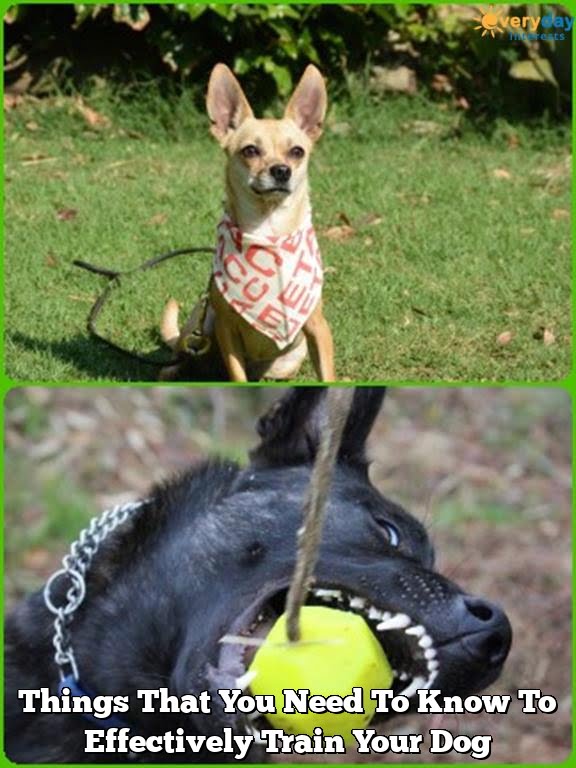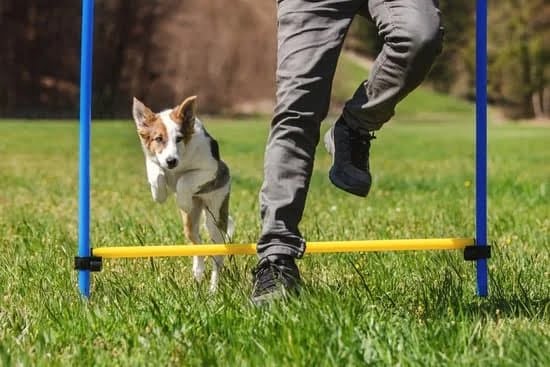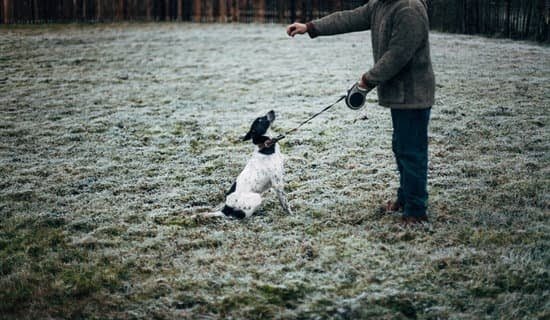Training your dog to bring you things is not only a practical skill, but it can also strengthen the bond between you and your furry companion. Imagine the convenience of having your dog retrieve your slippers or bring you the remote control when it’s out of reach. This article will guide you through the process of training your dog to bring you things, providing step-by-step techniques and addressing common challenges along the way.
Not only does teaching your dog this skill make everyday life easier, but it also taps into their natural instincts and abilities. As social pack animals, dogs have an innate desire to please their human companions and be helpful in any way they can. By building on this instinct, you are providing mental stimulation and fulfilling their need for purposeful tasks.
In addition to the practical benefits, training your dog to bring you things has numerous advantages for both of you. It strengthens your communication skills as you learn to understand each other better, establishing a clear line of communication that carries over into other areas of training. The trust and connection that develops through these training sessions can deepen the bond between you and your furry friend, resulting in a more harmonious relationship overall.
By following the steps outlined in this article, you will not only teach your dog a valuable skill but also foster a sense of accomplishment for both of you. So let’s dive in and explore how to unlock this hidden talent in your furry companion.
Understanding the Basics
Dogs have an innate ability to communicate and retrieve objects, making them excellent candidates for training to bring things to their owners. Understanding the basics of how dogs naturally communicate and retrieve objects is essential for successful training.
When it comes to communication, dogs primarily use body language and vocalizations to interact with humans and other animals. They rely on various cues, such as wagging their tail, barking, or using different facial expressions, to convey their emotions and intentions. As a dog owner, it is crucial to learn how to interpret your dog’s body language accurately. By understanding your dog’s signals, you can develop a deeper bond and establish clear communication during the training process.
Retrieving objects also comes naturally to many dogs due to their instinctive prey drive. Dogs often enjoy chasing after toys or balls and bringing them back to their owners. This behavior stems from their ancestral instincts as hunting pack animals. By tapping into this natural drive and channeling it through proper training techniques, you can teach your dog to bring you things on command.
To set yourself up for success in training your dog to bring you things, there are some essential tools and materials you will need. First and foremost, choose a variety of safe and appropriate objects that your dog can easily hold in their mouth without causing harm or discomfort. These can include soft toys made specifically for dogs or sturdy retrieval items like tennis balls or frisbees.
Additionally, having treats or rewards handy is vital for positive reinforcement during the training process. Treats should be small and irresistible to motivate your dog but should not be too large that they become distracting or difficult for your pup to handle while holding an object in their mouth.
Lastly, consider investing in a clicker or using a verbal marker such as “yes” or “good” as part of the training process. These markers help indicate the correct behavior at the precise moment it occurs, allowing your dog to associate the action of bringing you an object with positive reinforcement.
Understanding how dogs communicate and retrieve objects serves as the foundation for training them to bring you things. By learning your dog’s body language and using appropriate tools, you can begin laying the groundwork for successful training. In the next section, we will discuss teaching your dog basic commands that are essential for retrieving, such as “come” and “fetch”.
- Learn to interpret your dog’s body language accurately.
- Tap into your dog’s natural prey drive when training them to retrieve objects.
- Gather essential tools and materials, including safe objects, treats for positive reinforcement, and a clicker or verbal marker.
Preparing for Success
Before you begin training your dog to bring you things, it’s important to gather the necessary tools and materials to set both you and your furry friend up for success. Having these items readily available can make the training process smoother and more effective. Here are some essential tools and materials you will need:
- Training treats: Treats are a great way to motivate your dog during the training process. Use small, soft treats that your dog finds irresistible. It’s essential to choose treats that are safe and healthy for your dog, so be sure to read the ingredient list before making a purchase.
- Clicker or verbal marker: A clicker or verbal marker, such as the word “yes,” is used to mark the desired behavior when your dog successfully retrieves an item and brings it to you. This helps reinforce the behavior and lets your dog know they’ve done it correctly.
- Toys or objects for retrieval: Selecting appropriate objects for your dog to retrieve is key. Choose items that are safe, durable, and easy for your dog to hold in their mouth. Tennis balls or soft toys specifically designed for retrieval can be excellent options.
- Leash and collar/harness: During the early stages of training, it’s crucial to have control over your dog’s movements. Using a leash along with a collar or harness ensures that they don’t wander off while learning to bring objects back to you.
- Training pouch or bag: Having a designated pouch or bag for holding treats during training sessions keeps them easily accessible and prevents them from getting lost or crushed in a pocket.
Having these tools and materials ready will make the training process much smoother and more efficient. Once you have gathered everything, find a quiet space free from distractions where you can focus on teaching your dog this valuable skill.
Remember to have patience, practice regularly, and keep the sessions short and enjoyable for your dog. With the right resources and a positive attitude, you’ll be well on your way to training your dog to bring you things in no time.
Laying the Foundation
Before you can train your dog to bring you things, it’s important to establish a solid foundation of basic commands. Two essential commands for this training are “come” and “fetch.” Teaching your dog these commands will not only make the training process easier but also ensure that they have a good understanding of obedience.
To begin, start with the command “come.” This command is crucial because it will teach your dog to come to you when called, which is essential when they need to retrieve an object and bring it back. Begin by using treats or rewards that your dog finds valuable.
Hold a treat in front of their nose and say “come” in a clear and enthusiastic voice. As soon as they start moving towards you, reward them with praise and the treat. Repeat this process multiple times until your dog consistently responds to the command.
Next, move on to teaching your dog the command “fetch.” This command will teach them to pick up an object with their mouth and bring it back to you. Start by selecting a toy or item that your dog is familiar with and interested in. Get them excited about the object by playing with it yourself or making it seem appealing.
Once they are interested, toss the object a short distance away from you while saying “fetch” clearly. Encourage your dog to go after the object by pointing at it or using body language. When they pick up the object, call them back using the command “come.” Reward them enthusiastically when they bring the object back to you.
In addition to “come” and “fetch,” other basic commands such as sit, stay, and drop it can also be helpful during training sessions for retrieving objects. By establishing a strong foundation of these commands, you will create a strong communication system between you and your dog, making it easier for them to understand what is expected of them when retrieving objects.
Training your dog to retrieve and bring you things is not only a helpful skill, but it also strengthens the bond between you and your furry friend. With patience, consistency, and positive reinforcement, you can lay the foundation for successful training sessions that will lead to a well-behaved and obedient dog.
Table: Benefits of Teaching Basic Commands
| Benefits | Description |
|---|---|
| Better Communication | Teaching basic commands establishes a clear line of communication between you and your dog. |
| Improved Obedience | By learning basic commands like “come” and “fetch,” your dog will become more obedient in general. |
| Enhanced Bonding | The process of training reinforces the bond between you and your dog, creating a stronger relationship. |
| Safety Measures | Commands like “stay” and “drop it” help keep your dog safe by preventing them from running into dangerous situations or picking up harmful objects. |
Step-by-Step Training Techniques
Training your dog to bring you things can be a fun and useful skill that strengthens the bond between you and your furry friend. However, it’s important to break down the training process into manageable steps to ensure success. Here, we will outline some step-by-step training techniques to help you teach your dog how to bring you things.
- Start with the basics: Before diving into specific retrieving commands, make sure your dog understands basic obedience commands such as “sit,” “stay,” and “come.” These commands will provide a foundation for teaching your dog to bring you objects. Practice these commands in a distraction-free environment until your dog responds reliably.
- Introduce the concept of fetch: Begin by playing a game of fetch with your dog using a preferred toy or ball. Throw the object a short distance and encourage your dog to retrieve it by using enticing gestures and excited verbal cues like “fetch” or “go get it.” When your dog picks up the object, praise them enthusiastically and offer a treat as a reward.
- Gradually increase difficulty: Once your dog understands the concept of fetching an object, gradually increase the difficulty level by tossing the object farther away or hiding it in different locations. This will challenge your dog’s retrieving skills and keep them engaged in the training process.
| Step | Description |
|---|---|
| Step 1 | Teach basic obedience commands (sit, stay, come) |
| Step 2 | Introduce the concept of fetch using a preferred toy or ball |
| Step 3 | Gradually increase difficulty by tossing the object farther away or hiding it in different locations |
By following these step-by-step training techniques, you can effectively teach your dog to bring you things. Remember to be patient, consistent, and always reward your dog for their progress. With practice and positive reinforcement, your dog will soon become a skilled retriever and bring joy to your daily activities.
Choosing the Right Object
When training your dog to bring you things, it is crucial to choose the right object for them to retrieve. This ensures their safety and helps prevent any potential harm or accidents. Selecting items that are safe and appropriate for your dog’s size, breed, and age is essential in promoting a successful and enjoyable training experience.
Firstly, consider the size of the object. It should be small enough for your dog to comfortably hold in their mouth but not so small that it poses a choking hazard. Choosing an object that is too large may also hinder your dog’s ability to pick it up or carry it back to you. It’s important to find the right balance in size to optimize your dog’s success in retrieving.
Secondly, take into account the material of the object. Ideally, it should be durable and easy to clean. Avoid objects that can easily break into sharp pieces or have small components that could be swallowed by your dog. Opt for materials such as rubber or sturdy fabric, which are less likely to cause harm if chewed on or accidentally ingested.
Lastly, consider the appropriateness of the object for your dog’s breed and age. Some breeds may have a natural instinct for retrieving certain types of objects like balls or sticks, while others may prefer softer toys. Additionally, puppies may benefit from softer teething toys whereas adult dogs may enjoy more challenging retrieval tasks using sturdy objects.
In summary, choosing the right object for your dog to retrieve plays a significant role in their safety and overall training experience. By considering factors such as size, material, and appropriateness for your dog’s breed and age, you can ensure a successful and enjoyable training session that promotes positive reinforcement and strengthens the bond between you and your canine companion.
| Factors | Considerations |
|---|---|
| Size | The object should be small enough for your dog to hold in their mouth but not a choking hazard. |
| Material | Choose durable and easy-to-clean materials to avoid harm if chewed or ingested. |
| Appropriateness | Select objects that align with your dog’s breed, age, and natural instincts for retrieval. |
Reinforcing the Behavior
Once you have successfully taught your dog the basics of retrieving objects, it is important to reinforce their behavior and encourage them to continue bringing things to you. Positive reinforcement methods are highly effective in shaping your dog’s behavior and strengthening their desire to retrieve objects for you. Here are some techniques and tips for reinforcing the behavior of bringing you things:
- Use treats: One of the most commonly used forms of positive reinforcement is rewarding your dog with treats. Whenever your dog brings an object to you, praise them enthusiastically and immediately give them a treat. This helps to create a positive association between retrieving objects and receiving rewards.
- Verbal cues: Along with treats, verbal cues are important in reinforcing the desired behavior. When your dog brings an object, use a specific command such as “bring” or “deliver”, and make sure to use a consistent tone of voice. This will help your dog understand what is expected of them and reinforce the connection between the command and the action.
- Playtime as a reward: Apart from treats, dogs also love playtime with their owners. Incorporating play into the reinforcement process can be motivating for your dog while making training sessions more enjoyable for both of you. Use a favorite toy or engage in a game of tug-of-war as a reward when your dog brings you something.
To ensure successful reinforcement, it is crucial to be consistent with these positive methods every time your dog brings an object to you. Consistency will help solidify the desired behavior in their mind, making them more likely to repeat it in the future.
Additionally, it is important not to punish or scold your dog if they make mistakes during training or fail to bring an item on command initially. Doing so can discourage them and create negative associations with retrieving objects. Instead, focus on rewarding correct behavior consistently and gradually increase expectations as your dog becomes more proficient in bringing things to you.
By using positive reinforcement methods consistently, your dog will develop a strong understanding of the behavior you want them to exhibit and will be motivated to continue bringing you things. Remember to be patient and celebrate your dog’s progress along the way. This process not only strengthens the bond between you and your furry friend but also ensures that they become a reliable and helpful member of your household.
Overcoming Challenges
Identifying Common Challenges
Training your dog to bring you things can be a fun and rewarding experience, but it is not without its challenges. Understanding these challenges and knowing how to overcome them can help you navigate the training process more effectively. Some common obstacles that pet owners may encounter during this type of training include:
- Lack of Interest: Dogs have different preferences and motivations when it comes to retrieving objects. Some dogs are naturally inclined to fetch while others may need more encouragement or find other activities more appealing. If your dog seems uninterested in bringing you things, it is essential to find ways to make the activity more enticing for them.
- Distractions: Dogs can easily get distracted by their surroundings, especially if they are outdoors or in a new environment. The presence of other animals, interesting smells, or noises may divert their attention away from the training session. It’s important to gradually increase distractions as your dog becomes more proficient at retrieving objects.
- Fear or Anxiety: Some dogs may exhibit fear or anxiety towards certain objects or situations, which can hinder their ability to retrieve items. It is crucial to identify any triggers that may cause fear or anxiety in your dog and work on desensitization techniques before incorporating those objects into the training.
Addressing Challenges
To overcome these challenges and ensure successful training sessions with your canine companion, it is important to employ effective strategies:
- Make it Fun: Incorporate elements of play and excitement into the training process. Use toys or treats as rewards when your dog successfully retrieves an object, making the activity enjoyable for both you and your furry friend.
- Break It Down: If your dog struggles with retrieving bigger objects initially, start with smaller items like toys or lightweight balls. Gradually increase the size and weight of the items over time once your dog becomes comfortable with retrieving.
- Patience and Persistence: Training takes time, and every dog learns at their own pace. Be patient with your dog and provide consistent training sessions. If your dog is struggling, take a step back and break the process into smaller, more manageable steps.
- Seek Professional Help if Needed: If you find that you are facing significant challenges in training your dog to bring you things, seeking the assistance of a professional dog trainer can be beneficial. They can provide guidance tailored to your specific situation and offer solutions to overcome any obstacles you may be facing.
By understanding common challenges and implementing effective strategies to address them, you can help your furry friend become a skilled retriever in no time. Remember to always remain positive, celebrate small victories along the way, and most importantly, enjoy the process of training your dog to bring you things.
Advanced Training and Fun Games
Advanced Training Techniques
Once your dog has mastered the basic commands of retrieving and bringing objects, you can start incorporating more advanced training techniques to further enhance their skills. One way to do this is by increasing the distance at which your dog needs to retrieve objects.
Start by gradually throwing the object farther away during your training sessions, making sure to use positive reinforcement when your dog successfully brings it back to you. You can also teach them to retrieve specific items by using different cues or commands for each object.
Another advanced technique is teaching your dog to retrieve objects from different surfaces or environments. This helps them generalize their skills and become more adaptable in various situations. Start by introducing new textures, such as grass or sand, and gradually increase the difficulty level by adding distractions or obstacles while they are retrieving the object.
Incorporating Playful Exercises
Training doesn’t always have to be serious; incorporating playful exercises into your sessions can make the process more enjoyable for both you and your furry friend. One fun game you can play is a “treasure hunt.” Hide various objects around your house or yard, and encourage your dog to find and retrieve them. This game not only enhances their retrieving skills but also engages their problem-solving abilities.
You can also teach your dog tricks that involve retrieving objects, such as fetching a specific item by name or putting toys away in a designated location. These games provide mental stimulation for your dog and strengthen their bond with you through positive interactions.
Remember to keep each training session short and engaging, ensuring that it remains a positive experience for both you and your dog. Always reward their efforts with praise, treats, or playtime to reinforce their behavior and motivation during advanced training exercises.
Troubleshooting and FAQs
Common Concerns
Training your dog to bring you things can have its challenges, but with patience and consistency, you can overcome them. One common concern that many dog owners have is their dog not understanding the concept of bringing objects to them. It’s important to remember that retrieving may not come naturally to all dogs, so it may take some time for them to grasp the idea. Be patient and provide plenty of positive reinforcement when they make even small progress.
Another concern is when your dog retrieves an item but doesn’t want to give it to you. This behavior can stem from possessiveness or a lack of understanding about the game. To address this issue, practice a command such as “drop it” or “release” during training sessions.
This will teach your dog that letting go of the object is part of the game and will result in rewards or praise from you. Gradually increase the difficulty by using higher-value items that your dog finds more desirable.
Frequently Asked Questions
- Q: How long does it typically take to train a dog to bring objects?
- A: The length of time it takes to train a dog to retrieve objects can vary depending on several factors, including the breed, age, and individual temperament of the dog. Some dogs may grasp the concept quickly within a few weeks, while others may take several months before fully understanding and reliably performing the behavior.
- Q: My dog already knows how to fetch but won’t bring me things on command. What should I do?
- A: If your dog already knows how to fetch but is struggling with bringing objects specifically on command, it’s essential to break down the training into manageable steps. Start by reinforcing positive behaviors such as picking up an object and gradually increase criteria until your dog understands that they need to bring it directly back to you before receiving a reward.
- Q: Is there an age limit for training dogs to retrieve objects?
- A: Dogs of all ages can be trained to retrieve objects, although younger dogs may have an easier time learning due to their increased energy and curiosity. However, older dogs can still learn new skills with the right approach and motivation.
Remember, training your dog to bring you things is a process that requires patience, consistency, and positive reinforcement. Celebrate small victories along the way and continue to build on your dog’s progress. With time and dedication, you can have a well-trained canine companion who happily brings you things on command.
Conclusion
Training your dog to bring you things is a valuable skill that not only strengthens the bond between you and your furry friend but also has numerous practical benefits. As you reflect on the progress you and your dog have made in this training journey, take a moment to celebrate how far you’ve come.
A well-trained canine companion who can bring you things on command is more than just convenient. It can be a lifesaver in certain situations, especially if you have limited mobility or need assistance with daily tasks. Imagine being able to ask your dog to fetch your phone, a set of keys, or even medication when you’re unable to do so yourself. This skill can truly make a difference in your life.
Additionally, training your dog to bring you things is not just about utility; it’s also about fun and mental stimulation for both you and your pup. Incorporate playful exercises into their training routine to keep them engaged and motivated.
Set up challenges by hiding objects around the house and asking them to find and retrieve them. The sense of accomplishment they feel when successfully completing these tasks will boost their confidence and strengthen the bond between you two even further.
Remember that each dog learns at their own pace, so be patient with them during the training process. Celebrate every small milestone they achieve, as each one brings you closer to having a well-trained companion who can reliably bring you things.
With consistent practice, positive reinforcement, and love, your dog will master this skill and become an invaluable member of your household. So celebrate their progress, enjoy the benefits of having a well-trained canine companion, and continue discovering new ways to challenge and engage their retrieving skills for years to come.

Welcome to the blog! I am a professional dog trainer and have been working with dogs for many years. In this blog, I will be discussing various topics related to dog training, including tips, tricks, and advice. I hope you find this information helpful and informative. Thanks for reading!





